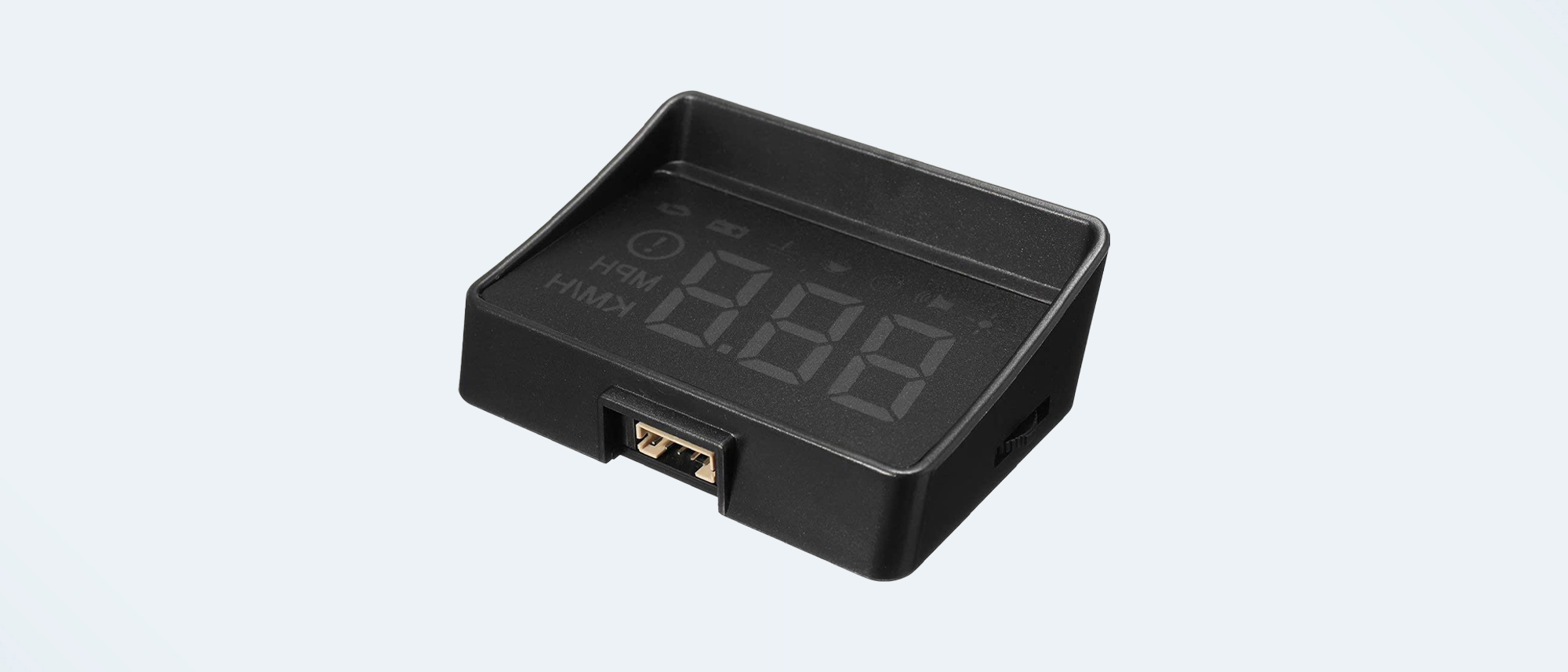Tom's Guide Verdict
By keeping its case small, the Sherox 3.5” HUD does a good job of displaying the basics without getting in the way of the driver’s vision. Unfortunately it skimps on screen quality and what it shows, while being one of the most expensive add-on heads-up displays around.
Pros
- +
Small, unobtrusive
- +
OBD powered
- +
Designed to not distract the driver
Cons
- -
Expensive
- -
Only shows four parameters
- -
Small monochrome screen
- -
No phone integration
Why you can trust Tom's Guide
Size: 2.8 x 1.9 x 1.0-inches
Weight: 1.4 ounces
Display size: 3.0-inches
Color/Monochrome: Monochrome
Number of parameters displayed: 4
Alarms: Yes
Looking for just-the-basics heads-up display? The Sherox 3.5” HUD is a bit pricey, but it keeps the data minimalist so the driver can concentrate on driving. Able to show four automotive parameters displayed on your car’s windshield, its small case will neither block your view of the road ahead or distract you from everything going on around you. Unfortunately not of that is good enough to warn it a place on our list of the best car heads-up displays.
Sherox 3.5” Car HUD review: Price and availability
Priced at $70, the Sherox 3.5” HUD is a small wonder that can tell you basic car info while driving. By contrast, the $40 Sherox C100 has a fold-open screen, but shows even less data.
Sherox 3.5” Car HUD review: Design and features
Like many competitors, the Sherox 3.5” HUD sits flat on the dashboard and projects its data upwards onto the windshield. Among the smallest and lightest add-on heads-up displays available, the Sherox 3.5” HUD measures 2.8 x 1.9 x 1.0 inches and weighs just 1.4 ounces.
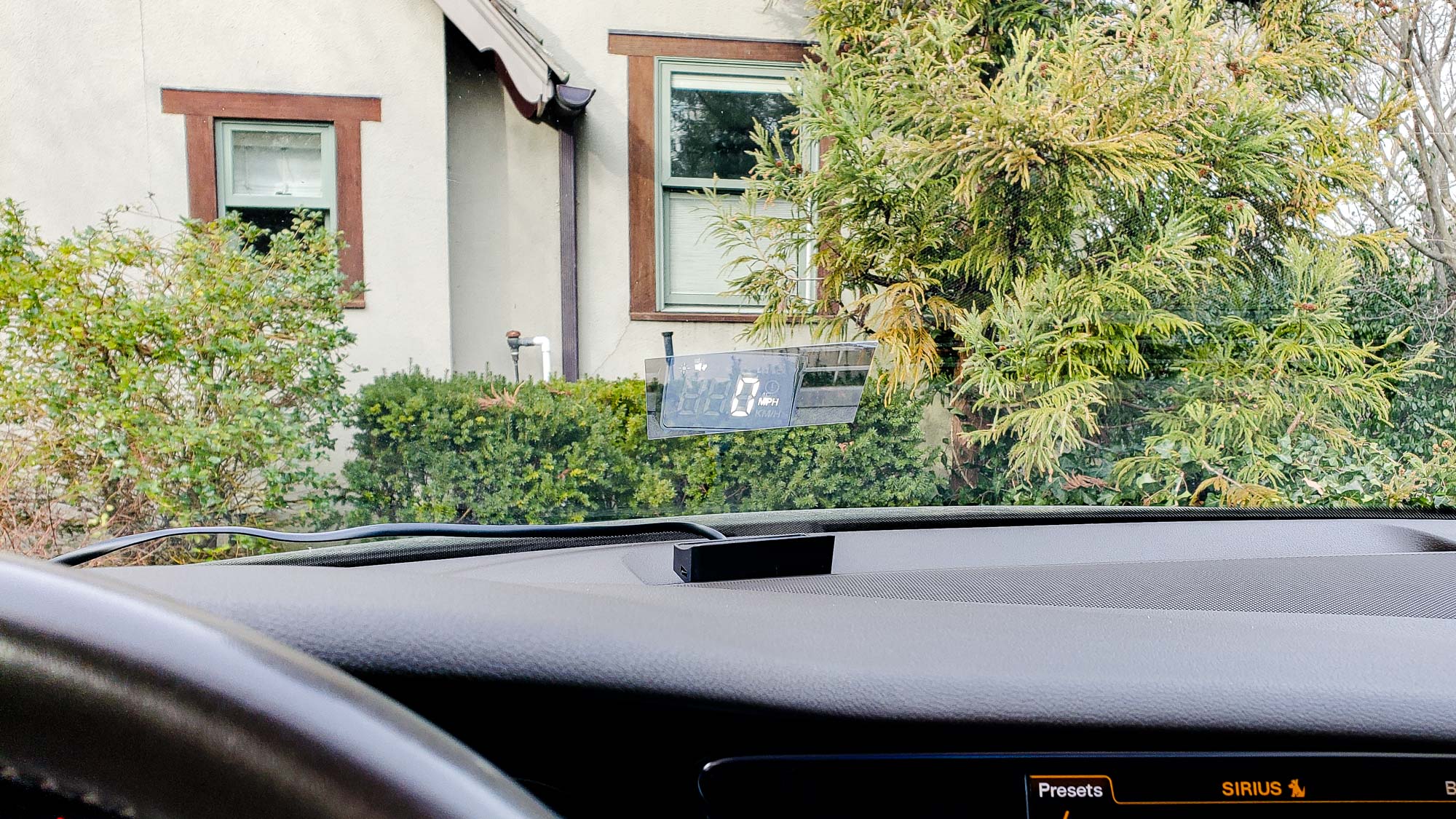
The HUD doesn’t come with any sort of adhesive strip to attach it to the dashboard, sadly. So you’ll need to come up with a solution to prevent it bouncing around on rough roads.
Despite its name, the device has a 3.0-inch monochrome screen that can’t compete with color heads-up displays. It’s just bright enough to show the data on the windshield, but it works best with the included reflective screen that can be attached to the inside of the car’s windshield. The device does without an integrated projection screen, however, like the one you’d find on devices like the Pyle PHUD180BD.
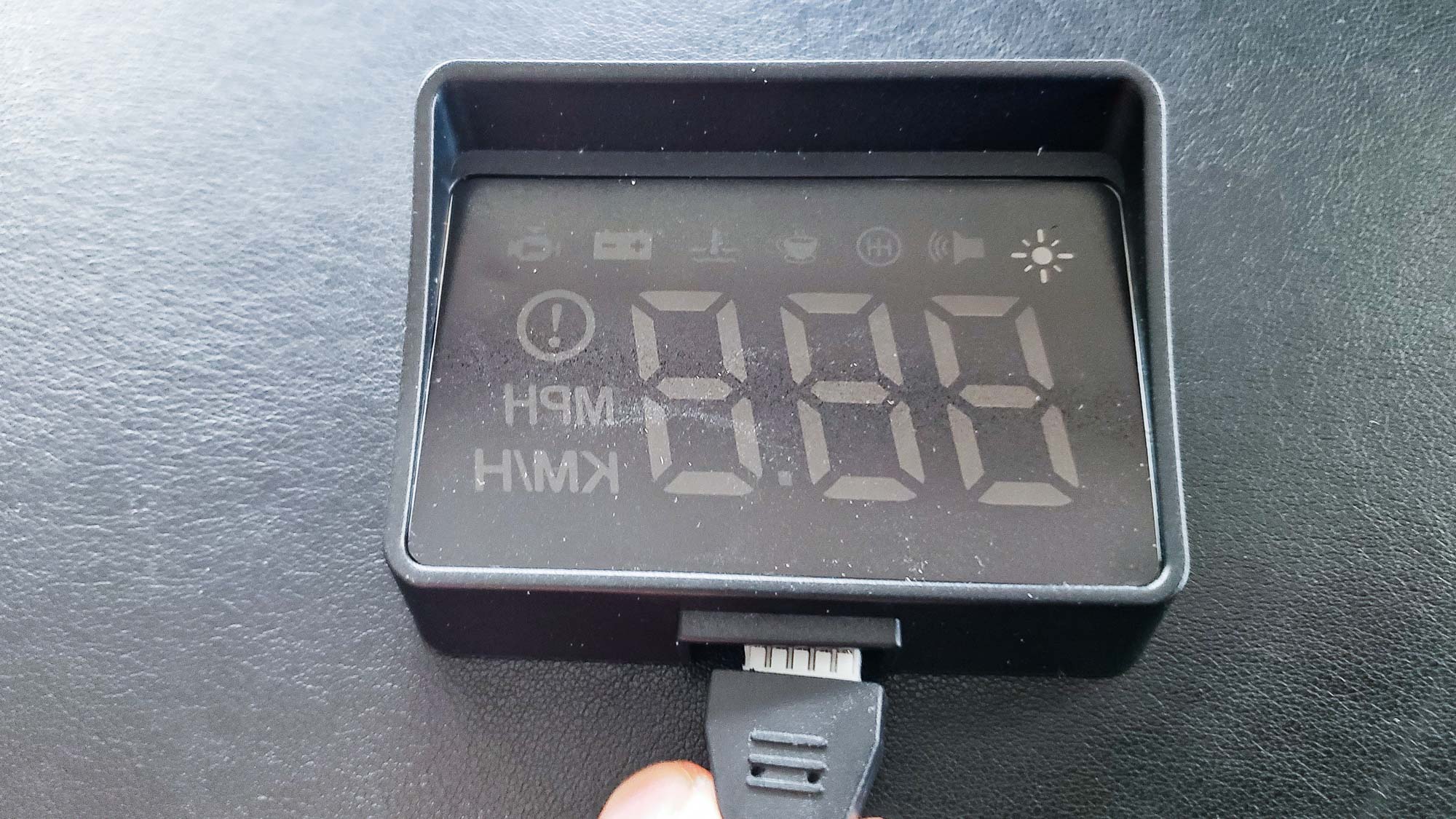
The Sherox 3.5” HUD has no on/off switch, is controlled by a small wheel and gets its power and data from a port on the top. The 69-inch flat OBD cable carries both power and data to the unit, and can be pushed into dashboard gaps. That means even a semi-professional installation will make the cable just about disappear.
On the downside, while other HUDs present dozens of operational parameters, the Sherox 3.5” HUD sticks to the basics. Available to display is speed (MPH or KPH), engine temperature, battery voltage and trip mileage. Its simplicity is refreshing but it lacks must-haves, like engine speed. The Sherox 3.5” does have a warning icon for an OBD fault, but you’ll need an OBD-II scanner to figure out what the problem is.
Get instant access to breaking news, the hottest reviews, great deals and helpful tips.
The HUD’s integrated light sensor can control the display’s brightness automatically or you can adjust it manually. In addition to warning of an impending gear shift, the Sherox 3.5” HUD will alert the driver that the battery is not at its proper voltage, as well as instances where the car is going too fast or overheating.
Sherox 3.5” Car HUD review: Setup
The Sherox 3.5” HUD can be used with most cars that have either an OBD or EUOBD port for diagnostic data. Unlike some competitors, it will work with hybrids but requires a different configuration routine. Fully electric cars and many trucks are off limits, though.
Plugging the Sherox 3.5” HUD’s connector into my car’s OBD port was quick and easy, with the unit starting up in an instant. Like many of the others, the connector is too short for easy removal, and you might need to resort to pliers.
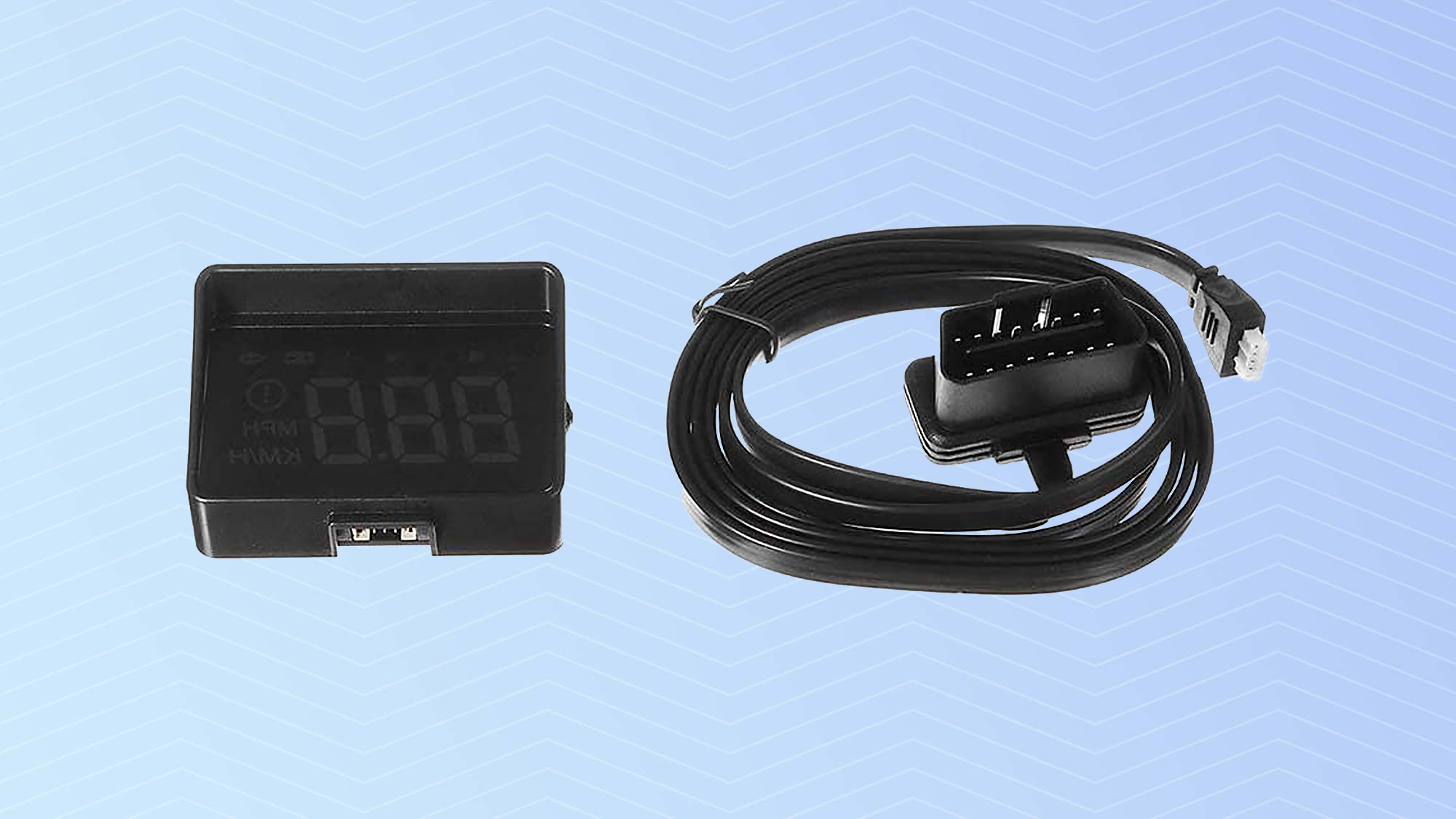
The device includes a 1-year warranty but its documentation, which is printed on a single 3.9 x 2.8 inch slip of paper, is sadly lacking. It only shows the main icons, how the settings wheel works and a list of its functions.
Sherox 3.5” Car HUD review: Performance
It took a second for the Sherox 3.5” HUD’s screen to start up after plugging the cable into the OBD port of my 2014 Audi A4 AllRoad. The device automatically turned itself off after I shut the car off. The lack of a power switch is a major shortcoming, and it lacks the Pyle PHUD180BD’s ability to stay on for a set amount of time after the car has been shut down.
Over the road, the Sherox 3.5” HUD displayed its basic parameters. The car’s speed is displayed with large white numerals, and shows up prominently on the reflective screen.
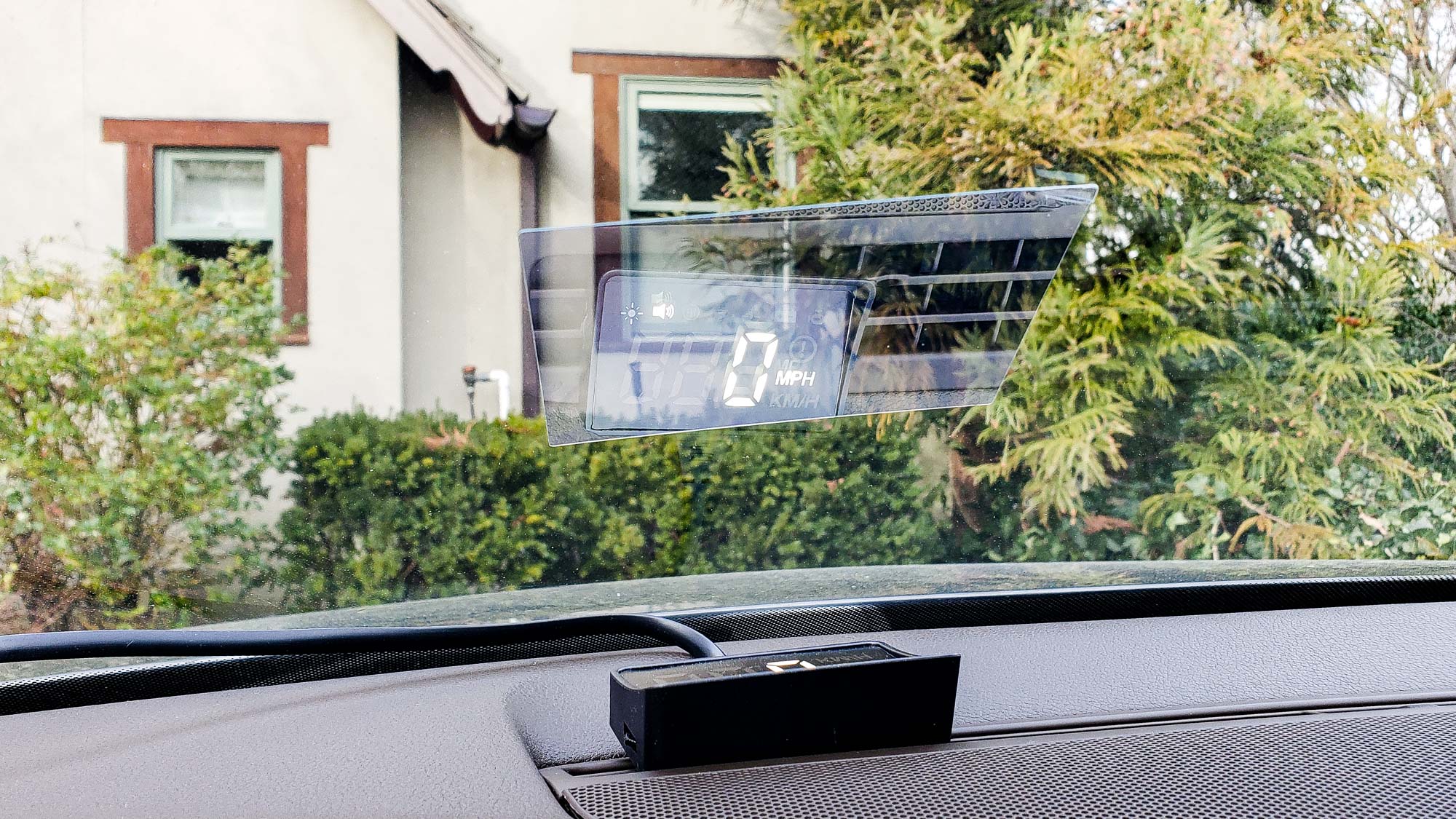
Sadly, despite Sherox material claiming that the reflective screen wasn’t needed, its output was barely visible on the car’s naked windshield. The numbers are readable with the stick-on screen, but the Pyle PHUD180BD HUD’s output was brighter and easier to read at a glance.
Sherox 3.5” Car HUD review: Bottom line
Small and basic, the Sherox 3.5” HUD can help telegraph vital car data to the driver without getting in their field of view. Only able to show a handful of parameters, its monochrome display is lacking compared to bigger color displays of other HUDs.
Its brightness is also lacking, and you’re going to want to keep hold of the bundled reflective screen to get any use out of it on the open road. Still, the Sherox 3.5” is a good addition to any car on the road today, though it may still be too basic for curious drivers.
Brian Nadel is a freelance writer and editor who specializes in technology reporting and reviewing. He works out of the suburban New York City area and has covered topics from nuclear power plants and Wi-Fi routers to cars and tablets. The former editor-in-chief of Mobile Computing and Communications, Nadel is the recipient of the TransPacific Writing Award.
